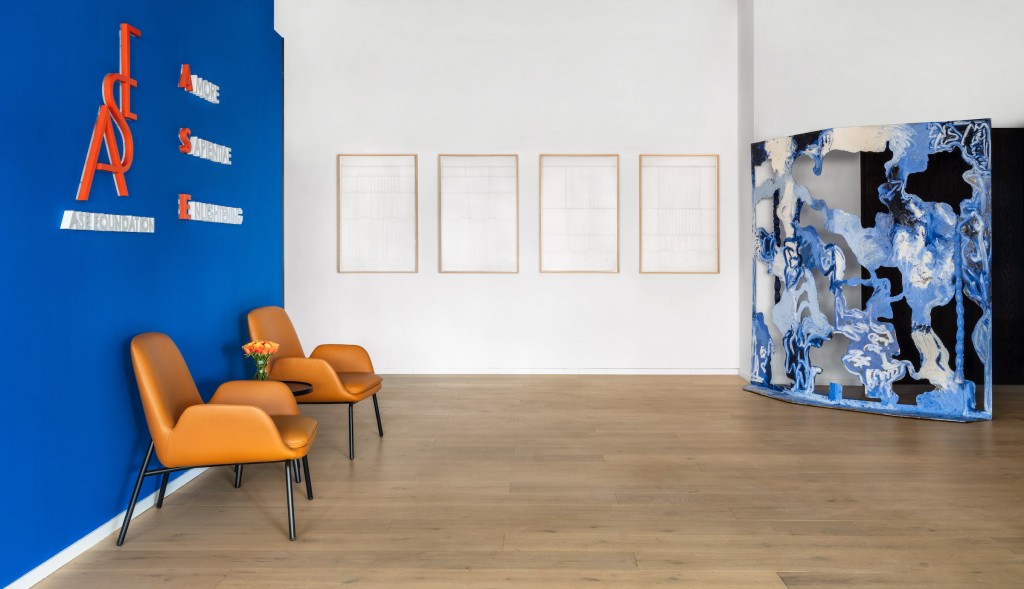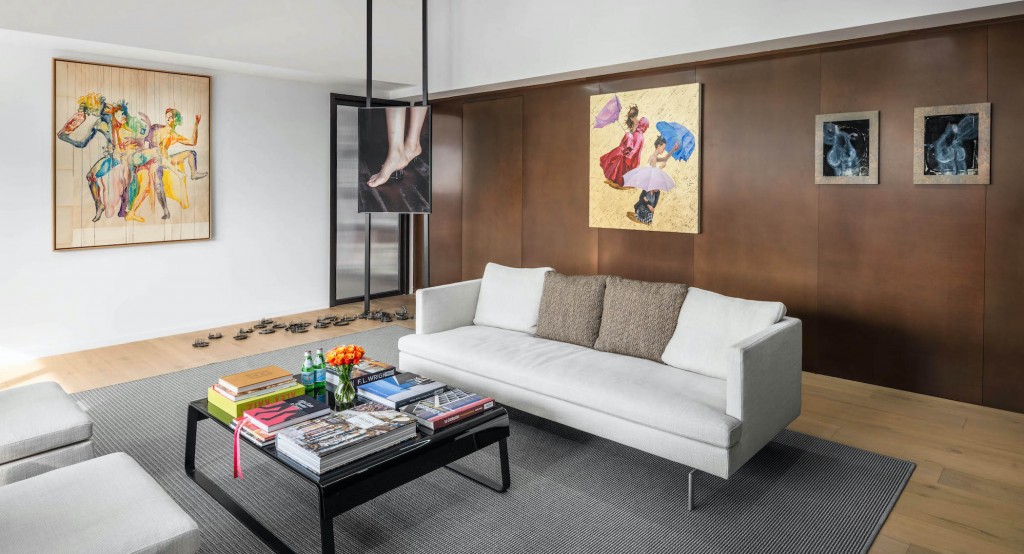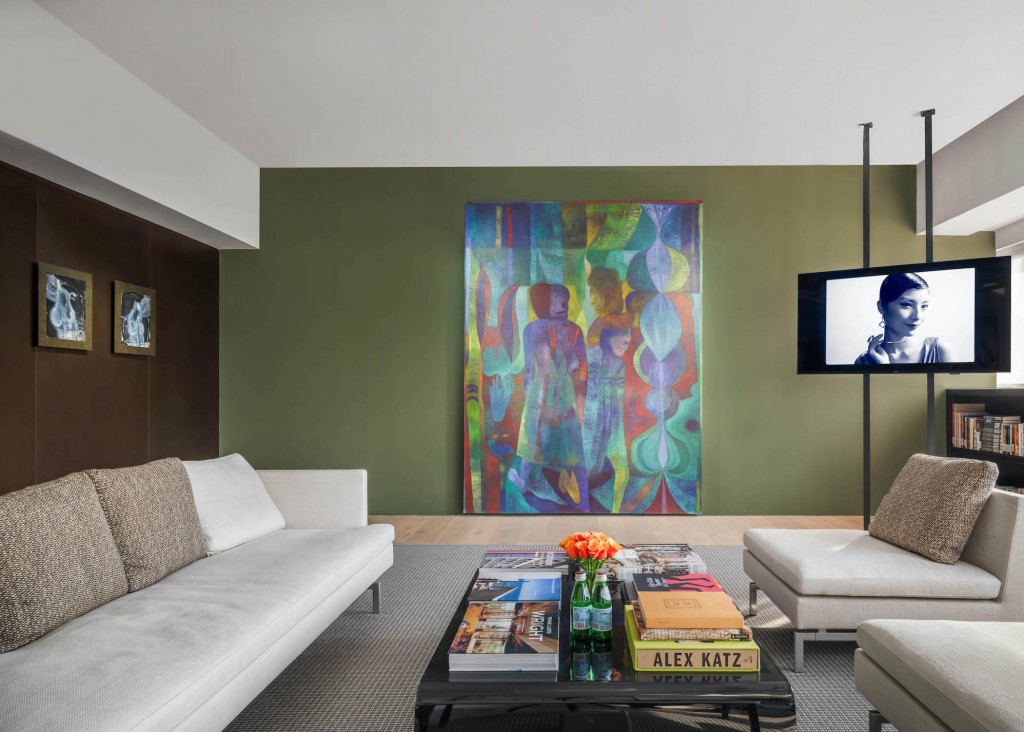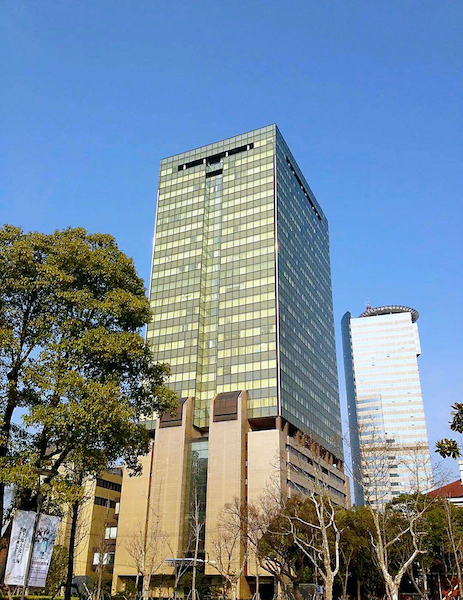One year ago, in the golden autumn season, the ASE Foundation officially landed in Shanghai. It is a non-profit foundation based in China with a global perspective. Joan Zhang Qiong, the founder of the foundation, is an outstanding female investor with a series of prestigious management awards. Her experiences studying at Stanford and traveling the world have honed her keen perception of art and profoundly influenced her views on collecting – seeing it not only as an extension of personal interests but also as a treasure of transgenerational heritage. ASE represents the initials of my three children’s names.
In line with her vision, the physical space of the ASE Foundation is not just a showcase for art but also a comprehensive art library and salon, echoing her desire for sharing. It is becoming a salon for art enthusiasts, a gathering place for exchanging ideas and resonating creativity.
On the occasion of the ASE Foundation’s first anniversary, LARRY’S LIST had a conversation with Joan Zhang Qiong, who shared about her decades of affinity with art collecting, what motivated her to establish the foundation, why she decided to name the foundation with her three children’s initials, the foundation’s space in the center of Shanghai, and its expanding international connections and ongoing engagements with the local community.

What motivated you to start collecting art? Has your motivation for collecting changed over time?
I have been involved in art collecting for 20 years, and my first piece of art was acquired while I was studying at Stanford University. During that time, I often visited San Francisco on weekends. I used to stroll along the streetswhere there were many galleries, appreciating the art displayed there.
After I bought a house in San Francisco, I began to delve into art collecting. Occasionally, I would also buy some art while traveling. During several memorable trips, I bought pieces especially in the old town of Montreal, Canada. On a trip to Sydney, I bought art from a female artist – three small pieces with abstract depictions of figures. At that time, I might not have understood how to research artists. I was simply drawn to the artworks, liked it and so bought it. Those artworks were like a part of my enlightenment. Upon returning to China, my first collected piece came from Long March, a sculpture. That’s how my art collection gradually started accumulating.
Later, I came up with the idea of establishing a foundation. Every year, I would return to San Francisco to visit MoMA, especially their first exhibition after the expansion in 2016, which left a profound impression. It was a comprehensive exhibition on contemporary American art, showcasing works by almost every renowned master in contemporary American art that you could name. After visiting it, I began pondering how successful entrepreneurs support the development of the entire art industry through art collection and how collecting can evolve not just as an interest but as a charitable way to make a lasting contribution to society. Viewing collecting from this perspective is clearly distinctive.

What kind of art style has always attracted you? Have you noticed anything in common among the artworks in your collection?
In the vast world of art, there are numerous artists with diverse expression styles and cultural backgrounds. However, I still choose to remain true to myself. Despite the brilliance of blue-chip artists’ works, which are often sought after in the market, my considerations lean more towards the future. How will people perceive my collection thirty or fifty years from now? How will they understand the relationship between myself and my collection? Having grown up in city, with a passion for music, architecture, and literature, I enjoy exploring the relationship between people and the urban environment. Therefore, my collection naturally focuses on this realm, gathering contemporary artists who express these themes with a distinctive contemporary flair. Additionally, my collection includes a focus on female artists.
What factors do you primarily consider when collecting? How do you find a balance between personal collecting preferences and cultural heritage?
Initially, my considerations were more driven by personal interests. However, as the foundation developed, especially in establishing a system for inheritance, I became more rational. I began to ask myself broader questions about why I should collect a particular work, whether the artist would be representative in the future, how to enrich and diversify the institution’s collection, enabling future researchers to understand my collection’s context more clearly. The result is that, in terms of specific forms of artwork, whereas before I leaned more towards paintings, I now plan from the institution’s perspective, considering other mediums, such as sculpture and film, paying more attention to academically oriented works, while also considering supporting emerging artists… It’s about finding a balance among these different perspectives.

Is there a particular artwork or artist’s work in your personal art collection that holds special meaning for you?
The artwork I mentioned earlier, collected in Sydney, still occupies a place in my office. Through its visual expression, it conveys a subtle feeling, prompting me to re-examine my own body. This abstract piece opened up new horizons for me in appreciating art, leading me from realism to abstraction and sparking an interest in sculpture and video. Recently collected works by Zhang Mingxuan and Lu Yu also hold special significance for me. I’ve also collected many new works by young artists, such as Laure Provost, Zhang Zipiao, Gao Ludi, and Wang Yi. My high expectations for the new generation of artists stem from their unique worldview and self-awareness, which are closely related to their upbringing and the challenge of finding common ground in a global context. Perhaps decades from now, their works will more deeply reflect the characteristics of this era. Another artist, Su Yuxin, made me aware of the growth process of an artist through her works. Her recent works use mineral materials for creation, highlighting not only the origin of materials but also reflecting a deep exploration of materials, exuding a strong sense of power. Therefore, communication with artists is also a beneficial learning process for me.
How important is it for you to meet the artists? How does understanding their personality, character, and concept affect collecting artworks?
The language and expression style of artists are influenced by their lifestyles and environments. Therefore, for me, visiting artists’ studios is an opportunity to gain a deeper understanding of artistic creation. I am eager to understand the artists, the sources of their inspiration, and the nutrients of their creation. When deciding whether to collect a work, I not only consider the work itself but also pay attention to the artist. The artists I personally prefer can be divided into two categories: one is very “pure” and focused artists, immersed in their own artistic ideas and creative paths; the other is conceptual and imaginative artists, with unique insights and ideas beyond the ordinary. Chatting with these artists is a comprehensive process. For example, visiting Ni Youyu’s studio left a deep impression on me. Previously, I only knew that he was good at creating small paintings. However, stepping into his studio, I discovered it was like a treasure trove, filled with various artistic elements. He reassembled the large number of frames specially shipped back from Europe and showcased his paintings and installations within. As an artist with strong comprehensive abilities, he excels in both painting and sculpture, seamlessly integrating the two and continually improving. Those visits to his studio allowed me to understand him more deeply, to see his development and progress, and to gradually break through himself.
的作品《Stack-8-Cadmium-Red》(2021)。“StageTime”展览现场,2022年,ASE基金会,上海。图片来自ASE基金会。-1024x682.jpg)
。“楼上的城市”展览现场,2023年,ASE基金会,上海。图片来自ASE基金会。.jpg)
What motivated you to establish an art foundation more than twenty years after discovering and collecting artists? How did your personal collection influence your vision and mission in building the foundation?
Perhaps initially there wasn’t a clear plan, but each visit to various exhibitions provided me with different insights and impacts. During a visit to the Musée d’Orsay in Paris, an exhibition donated by a family, showcasing French impressionist art. The entire family’s collection, accumulated over decades and even centuries, was presented to contemporary society, offering a glimpse into its entirety. This inspired me, showing that collecting itself can transcend the limitations of individual lives and reveal historical and educational significance to future generations and society as a whole. There were three motivations behind establishing the foundation. Firstly, I wanted to give my collection more structure, higher future value, and deeper educational significance. Secondly, I considered how to integrate more family heritage. Western collections have been passed down through generations, with descendants inheriting not only family businesses but also the accumulated artistic culture. Although Chinese society seems less focused on this aspect, I believe it’s an inevitable trend. Therefore, I named the foundation ASE, representing the initials of my three children’s names, symbolizing love and enlightenment. The third consideration was that artworks are not just for collecting and possessing; they also need to be displayed and shared with more people. However, how to effectively share them is a challenging issue. Some collectors may choose to keep their works at home, but residential space is ultimately limited, and some works may not be suitable for home display. Due to my strong interest in literatures, I thought of combining exhibitions with art books, creating a space more like a living room, a salon, a library, where art enthusiasts can gather and exchange ideas.

Could you provide more information about the physical space established by the ASE Foundation in Shanghai last year? Can you introduce us more to this physical space?
The ASE Foundation is located on the 7th floor of the Ruijin Building in the Huaihai Road-Fuxing Road Heritage Conservation Area in the center of Shanghai. It was once known as the “Foreign Experts Apartment” and is one of the earliest foreign-related office buildings in Shanghai. Although I had visited some other locations before, they were relatively far away. The space is very spacious and overlooks the Ruijin Hotel. I lived nearby when I was a child, which gave me a sense of familiarity. It is not overly commercialized, more like a small community, very quiet and authentic. So I quickly made the decision. When we started the preparations, Shanghai had just started its lockdown, so it took two years from preparation to actual opening, until last year when it officially opened to the public. However, seeing the realization of what I wanted to do is more satisfying than anything else. Setting up the space is quite laborious, so we only do two exhibitions per year, but each exhibition requires about six months of preparation. Each exhibition includes a part of my collection, linked to other artists’ works and forming a dialogue with the existing collection through the curation by guest curators,. This enriches and completes the conceptual expression of the exhibition themes. The commissioned works are also discussed with galleries and curators, forming a fun process. While creating together with everyone, I also learned a lot, broadening my collection and artistic vision.
You have mentioned that the goal of the foundation is to create an art exchange platform with a “global perspective.” Under this guiding principle, how important is facilitating dialogue on cultural diversity and inclusivity to you? Will this affect the foundation’s future plan for supporting specific types of art projects?
Engaging in international dialogue and interaction is likely to be our next step. In the early stages of the institution, we primarily focused on defining our position. As opportunities for international exchanges gradually increase, we hope to establish connections with more international institutions while conducting more local interactions in Shanghai, playing a role in promoting exchanges. For example, helping young artists enter the international scene while giving foreign artists the opportunity to integrate into China. Years of collecting experience have given me a deep understanding of the diversity of art, and there are many directions the foundation can explore.
,《Coca-Cola-Girl-11》(2019)。“StageTime”展览现场,2022年,ASE基金会,上海。图片来自ASE基金会。.jpg)
What advice do you have for collectors who are just starting their journey in art collecting?
It’s important to observe more and cultivate this habit. At the same time, develop your own collecting approach. Galleries will recommend many outstanding artists, but in today’s increasingly mature art market, there are more opportunities for young collectors to form their own collecting systems, rather than following trends. Of course, you will have your own preferences, but also be brave enough to challenge yourself and step out of your comfort zone. Finding what you truly love will enable you to go further in the art world.
Related: ASE Foundation
Instagram: @ase_foundation_
Translated by Ballad Liao
Edited by Ricko Leung





